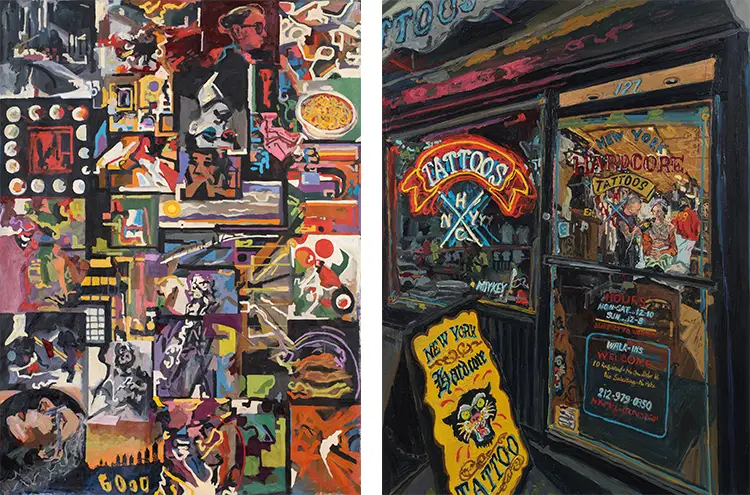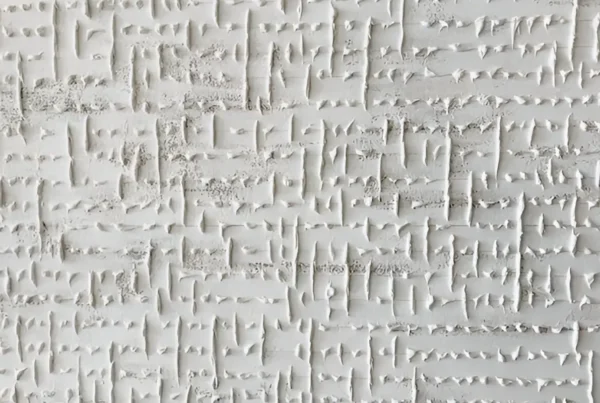Artwork photography by John Berens. Studio portrait by Neil Kramer.
“Painting is a visual language—a way to translate what I see and share my distinctive perspective with the world.”
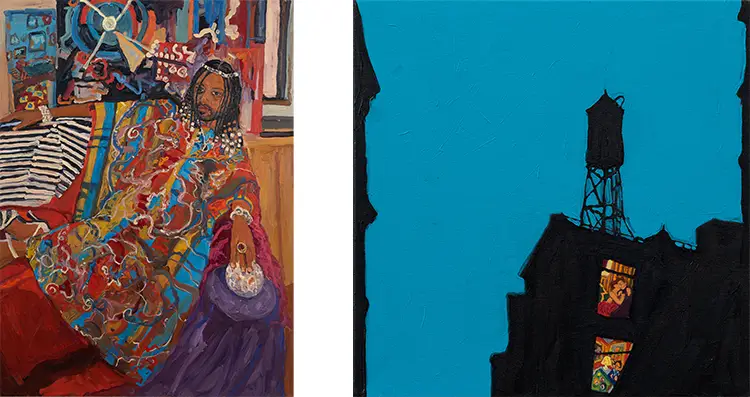
The Quiet Spark Behind the Canvas
Sonya Sklaroff’s journey into the world of art began in the most unassuming of ways—through a childhood marked by introversion, observation, and a boundless appetite for visual expression. Growing up in a nurturing family that prized creativity and inquiry, Sklaroff discovered early on that her strongest form of expression came through lines, shapes, and textures rather than words. Her parents, recognizing her unique way of engaging with the world, arranged informal weekend drawing sessions with a local art student. These sessions were anything but conventional lessons. Instead, they became formative experiences of shared sketching and open-ended exploration, rooted in parks and city streets where they captured the world as it moved around them. That early method of seeing and recording has remained central to her approach, laying the groundwork for a lifetime of painting drawn from lived encounters and unfiltered curiosity.
Her early affinity for tactile and visual experimentation blossomed into a lifelong dedication to art. While other children gravitated toward traditional playground games, Sklaroff was content sculpting clay animals, illustrating imaginary worlds, and mining the soil for rock specimens that resembled human faces. That enduring connection to creativity eventually led her to formal training at two of the most respected institutions in the field: Rhode Island School of Design, where she earned her BFA, and Parsons School of Design for her MFA. These academic pursuits, however, were just one part of the puzzle. Sklaroff’s first professional studio space, located in a Tribeca building populated by fellow artists, was just as instrumental in shaping her career. It was here that she encountered a network of creatives whose camaraderie and support provided access to exhibitions, open studios, and curatorial conversations that would mark the true beginning of her public life as an artist.
Sklaroff’s creative discipline was forged not just in formal education or social immersion, but in her consistent, deliberate commitment to daily work. Central to this is her studio, a space she designed as both a sanctuary and a laboratory. Situated apart from her home to preserve focus and intention, it features expansive windows that flood the room with natural light. The commute to her workspace—via subway—is a mental transition as much as a physical one, allowing her to shed everyday distractions and enter a deeply engaged state. Music and podcasts form a comforting auditory backdrop while she paints, yet nothing intrudes on the clarity of her concentration. This conscious architecture of her working environment reflects her reverence for the creative act as something that must be protected, nurtured, and continuously honored.
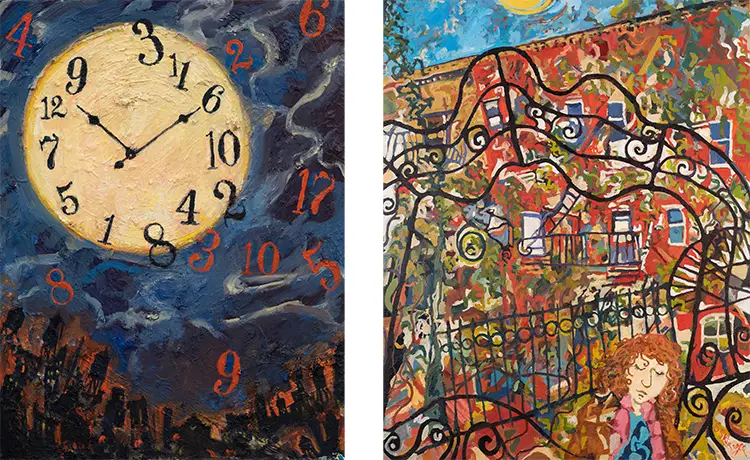
Sonya Sklaroff: Where Color, Imagination, and Observation Collide
Sklaroff’s visual language could be described as expressionistic painterly realism—an aesthetic that marries the rigor of representation with the freedom of emotional and visual interpretation. Her brushwork is assertive, her colors often daring, and her approach to perspective deliberately elastic, enhancing the psychological depth of each composition. While grounded in the tangible—buildings, human figures, landscapes—her work resists literalism. Instead, it draws attention to subtle distortions and emphases that animate her subjects and invite viewers to reconsider their own surroundings with heightened sensitivity. Her process usually begins with on-site sketches or plein air studies, which later evolve into larger studio works. This practice reinforces the immediacy of her observational instincts, while giving her space to explore more abstract or symbolic interpretations during the final execution.
At the heart of Sklaroff’s artistic inquiry lies a commitment to uncovering beauty in the unnoticed. Her paintings often center on ordinary settings—an urban garden fence, a city street at twilight, the contours of a blooming tree—but her treatment of these subjects elevates them beyond their everyday context. She finds lyricism in architectural details, mystery in mundane corners, and a quiet grandeur in fleeting moments. One striking example is a painting featuring a moon shaped like a clock, with its numerals exploding into the night sky. The surreal image becomes a meditation on time’s instability, its illusions, and its emotional weight. Another piece, inspired by a garden scene, reimagines a wrought iron fence as a musical staff, with flowers and vines bending and dancing like notes in motion. These imaginative flourishes transform observational studies into layered narratives, giving her work a dreamlike resonance.
Sklaroff views painting not as a passive act of documentation, but as an active means of translation—transforming her perceptions into a visual syntax uniquely her own. This philosophy infuses even her most grounded pieces with a sense of energy and originality. Her canvases invite repeated viewing, each glance revealing new harmonies of form and meaning. By blending architectural solidity with painterly looseness, she creates spaces that feel simultaneously real and conjured. Her attention to both formal technique and emotional cadence ensures that each piece maintains a balance between precision and intuition. This duality—order versus spontaneity, realism versus imagination—is what makes her work both accessible and deeply evocative.
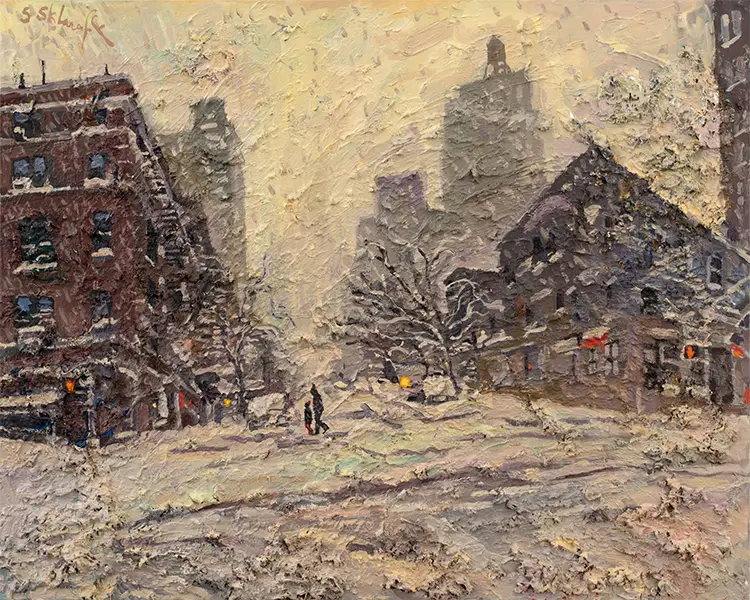
The Art of Belonging and Influence
Although painting remains her primary mode of expression, Sklaroff draws deeply from a wide array of artistic disciplines, infusing her work with cross-medium inspirations. Dance, theater, design, literature, photography, music, and even culinary arts all inform her practice, bringing diverse textures and sensibilities into her visual compositions. One vivid example of this interplay can be found in her use of dancers as subjects—both in her art and in her life. She herself dances as a form of creative expression and personal restoration, and has translated that fluidity and movement into her painted figures. These influences allow her to bring a dynamic rhythm to otherwise still imagery, subtly referencing gesture and choreography in the flow of line and form.
Sklaroff’s reverence for influential artists is equally pivotal to her development. Among her most impactful mentors is Faith Ringgold, whose visit to Sklaroff’s graduate program left a lasting impression. Ringgold’s fearless embrace of political subject matter, along with her mastery of bold color and personal storytelling, resonated strongly. For Sklaroff, Ringgold’s presence served as a blueprint for authenticity and resilience—proof that artistic voice can be both deeply personal and socially powerful. Beyond named influences, Sklaroff frequently draws inspiration from friends and collaborators across creative industries. These interpersonal connections enrich her artistic ecosystem and reinforce the idea that art is both a solitary act and a communal dialogue.
This sense of community and shared purpose extends to Sklaroff’s current portrait project, which features creative individuals who hold personal significance—dancers, designers, chefs, musicians, writers, and inventors. These sessions are intimate and collaborative, often unfolding through conversation as the subject sits for her in the studio. The portraits are expressive and unfiltered, emphasizing emotional authenticity over technical polish. They act as visual tributes, not only to the subjects themselves but to the creative impulse that unites them. Still in progress, this series represents a return to the roots of her practice—observing real people in real time—while pushing her toward new expressive possibilities. The eventual exhibition of this body of work promises to showcase not only her subjects, but the vibrant network of influence that nourishes her creativity.
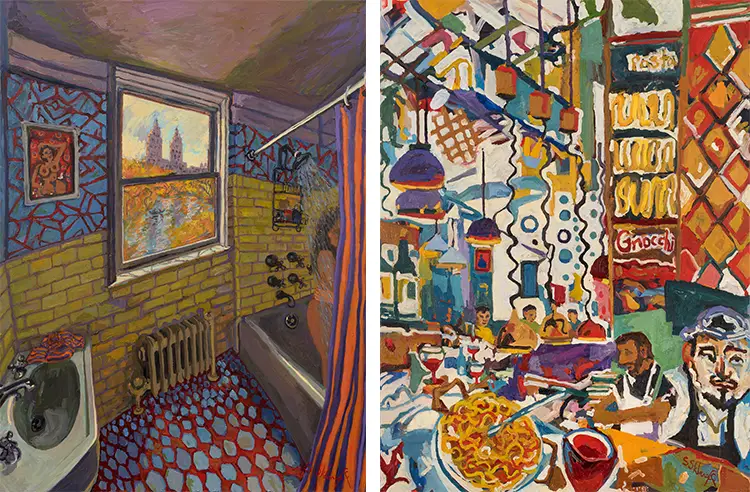
Sonya Sklaroff: Capturing the Soul of the Journey
Among the most meaningful works in Sklaroff’s current repertoire are her plein air travel paintings—pieces that embody spontaneity, joy, and an unfiltered reaction to place and moment. These artworks are painted directly from life while she travels, often created on-site in cities and landscapes around the world. Their significance lies not just in their visual content, but in the immediacy of their creation. They are, by design, unplanned and instinctive, allowing her to respond to her surroundings without the filter of preconception. This mode of working fosters an energy and honesty that is difficult to replicate in the studio, making each piece a kind of visual travel journal, emotionally anchored to a specific place and time.
These plein air works were recently featured in her solo exhibition Voyages, held in Paris from June 25 to July 2. The show brought together paintings that reflected not only physical exploration but also a deep sense of internal movement. For Sklaroff, these works represent an extension of her broader artistic mission—to observe, interpret, and celebrate what might otherwise go unnoticed. Their portable scale and vivid brushwork highlight her ability to find inspiration in transit, capturing not just architecture and atmosphere but the spirit of unfamiliar locations. Each painting offered a sensory snapshot, telling stories of texture, color, light, and fleeting impressions that might otherwise be lost without such careful observation.
Although oil on canvas remains her medium of choice—praised for its versatility and expressive range—Sklaroff is equally skilled in watercolor, pastel, ink, charcoal, collage, and even three-dimensional formats. This fluency across materials allows her to adapt to different contexts, whether she’s in her studio refining a large-scale composition or sitting on a park bench sketching a bustling street. Her openness to multiple media enhances her responsiveness to the world around her, reinforcing the intuitive, interactive nature of her practice. Each project she undertakes, whether a plein air study or a portrait in progress, underscores her central artistic belief: that creativity, when rooted in genuine attention, has the power to transform the ordinary into something deeply meaningful.
